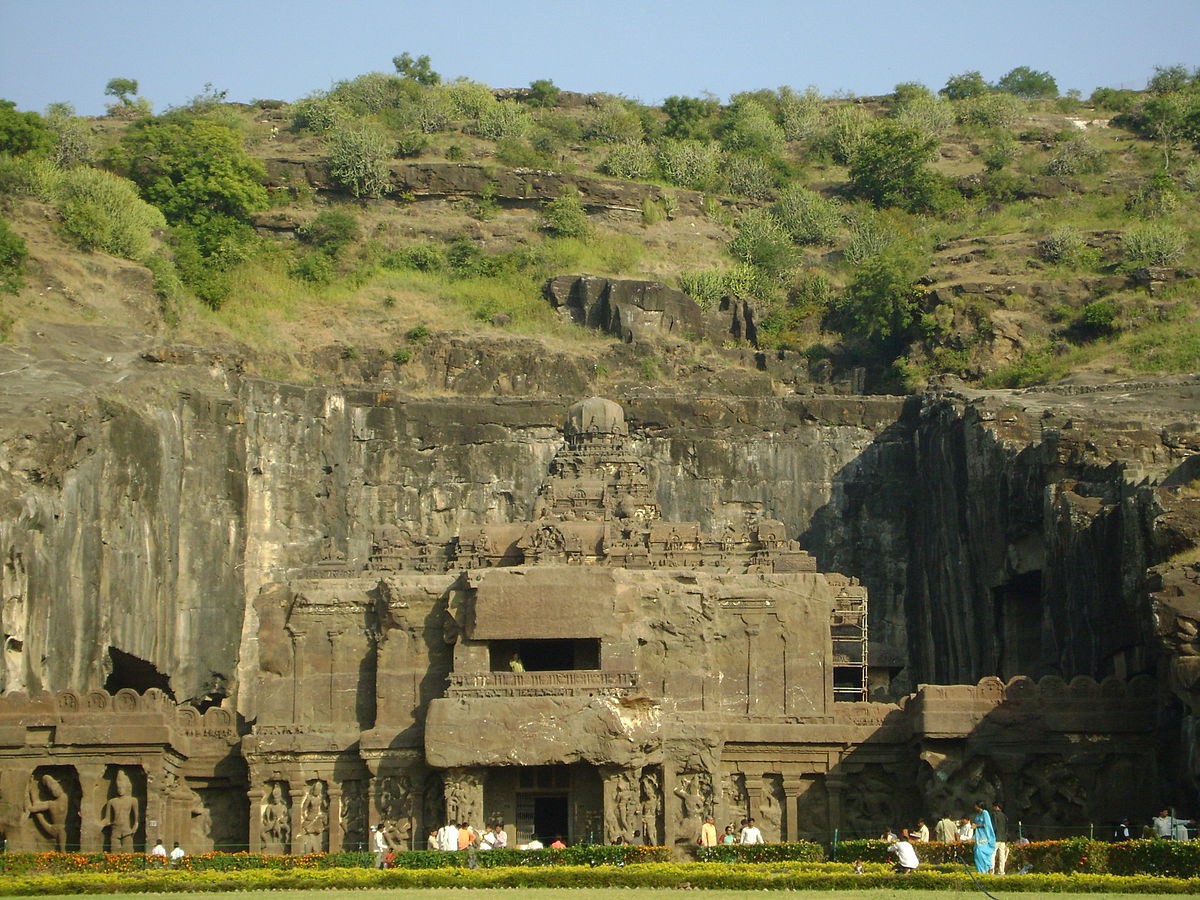Closed off for a couple of centuries, India lost some of the cultural, religious, and ethnic plurality that once characterised it. Buddhism and Jainism declined, and Hinduism spread aggressively across the South, and from there to Southeast Asia. This new Hinduism was different from Brahmanism in that it had a relatively broader social base, helped along by proselytising from religious reformers. In addition, it was expressed with the construction of structural stone temples, often with royal patronage. This will be explored later.

South Indian rulers also began to show an increasing interest in Northern culture. From the 9th to the 10th centuries, the Rashtrakuta rulers of the Deccan highlands sparred with North Indian powers to control the grand imperial city of Kannauj, and built temples that reflected a sort of “transference” of sacred significance from North India to the South, as Diana L. Eck argues in India: A Sacred Geography. Consider the magnificent monolithic Kailasanatha (“Lord of Kailasa”) temple at Ellora, which figuratively represents the holy mountain of the god Shiva, which is actually in the Himalayas. (This will be referenced in the sequel to this article).
In this milieu, in the deepest South of India, the Tamil land, the Chola dynasty emerged from relative insignificance to sear the rice-fields with the heat of a King-of-Kings, to paraphrase Keay.
Why the Cholas Were Powerful
As urbanisation in the Tamil land depended on trade, any ruler worth his (or her) salt recognised how important it was to keep it thriving. Despite (or perhaps because of) the continuous rise and fall of dynasties, merchant guilds became more and more powerful, as did local councils.
Kanakalatha Mukund points out that this was the most efficient way to govern, given the state of technology at the time. Local councils would collect taxes for the central administration, and possessed authority over reinvesting some of the wealth collected. Each assembly was responsible not only for law and order, irrigation, and the stewardship of land under its jurisdiction, but also for running the local temple.
The local temple was much more than merely a religious institution. They served as headquarters for the local assembly, as cultural and entertainment centres, and as providers of jobs and capital. Everyone from shepherds and gardeners, to sculptors and bronze-workers, to priests and dancing-girls, would find profit here. The construction of a temple, therefore, led to spreading wealth and prosperity.
This process took centuries to come to a head. First merchants had to emerge, then cities, then a widely-accepted temple-building culture, and then the wealth needed to build a temple. This culminated roughly when the Chola dynasty emerged, and the factors which characterise an Indian Golden Age once again aligned. The South burst into prosperity.
The Chola administration reached a sort of “golden mean” between local self-governance and centralisation. The king would be responsible for foreign affairs, military matters, and monumental works such as the massive Brihadesvara Temple (pictured above). The local assemblies handled day-to-day administration, public goods, and tax collection.
The military aggressiveness of the Cholas — who did not shy from sacking temples and monasteries — provided wealth which the military classes reinvested in temple construction. This was seen as a way to generate social capital, and was also done by the wealthier merchants.
This meant that the Chola state, almost by definition, continuously stimulated further urbanisation and prosperity. This fine balance was achieved possibly because of the shrewd policies of the first of the imperial Cholas, Rajaraja I, the father of the aforementioned Rajendra. I will discuss the geopolitical actions of the dynasty, and the causes of its decline, in a sequel to this article.